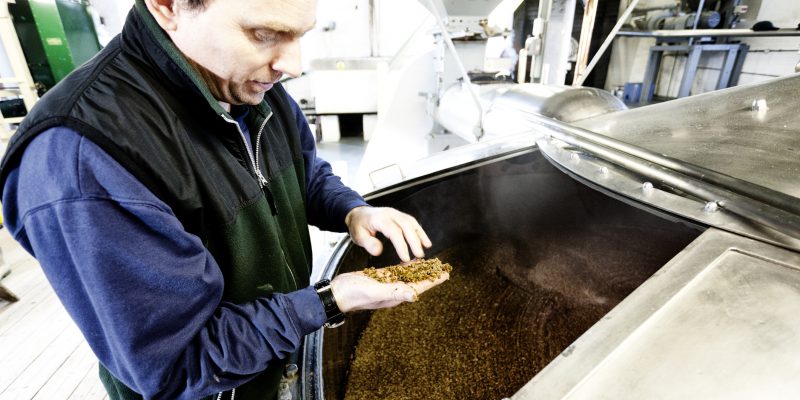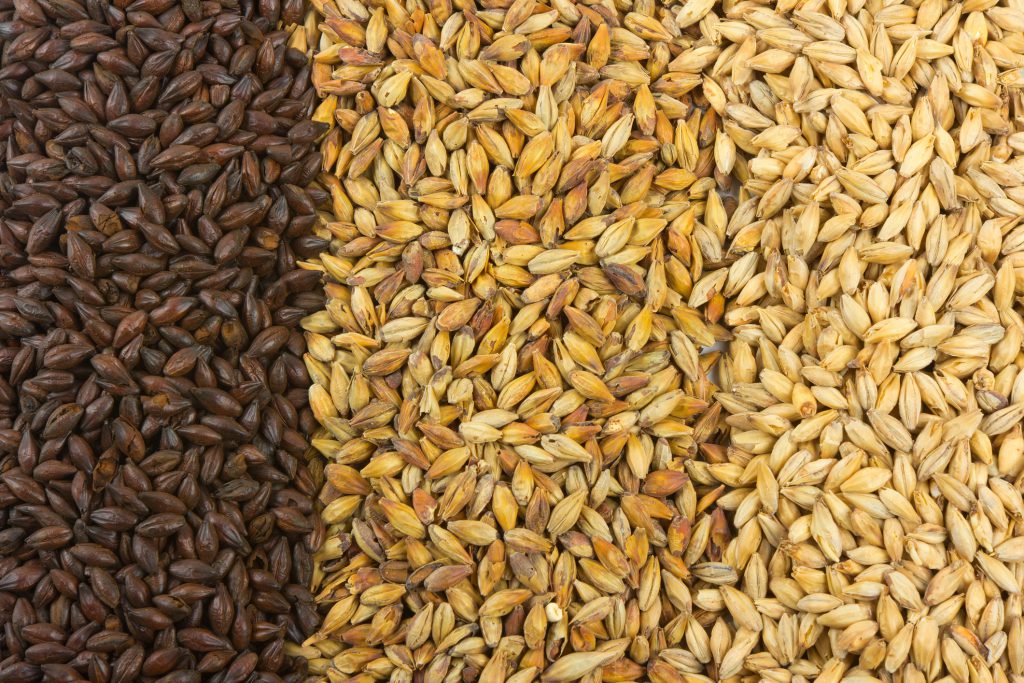With the increasing demand for fruity and piney India Pale Ales, hops often take center stage in the beer world. That has not stopped many of the brewing industry’s finest minds from working to understand and improve malt, an essential co-star in the beer-making process.
To understand why, it’s important to know the grain’s purpose and limits.
Comprising 75 percent to 98 percent of the brewing materials in beer, malt is created by kilning or roasting germinated barley at various temperatures for prescribed lengths of time. Yeast converts the fermentable sugars that were extracted from the malt into alcohol, while the unfermentable sugars help create body and sweetness that help balance the bitterness coming from hops. Malt, including base malt and kilned or roasted specialty malts, also imbues finished beer with colors and a complex suite of hundreds of sensory attributes, just as hops do.
Before the rise of craft beer, most large-scale legacy breweries used a combination of malt and adjuncts – such as corn or rice – to brew light lager beer styles. Craft brewers generally eschew cereal adjuncts in favor of all-malt grain bills to produce the more flavorful beers their consumers demand.
It didn’t take long to learn most malt producers could not meet the needs of both large-scale and craft brewers with similar malt products. “Through the 1980s, our brewing industry [had] spent 50 years producing adjunct lager and virtually nothing else. Our malted barley industry responded very correctly to the needs of those brewers,” said Chris Swersey, director of supply chain management for the Brewers Association. “And now there’s another set of needs.”
Work began in earnest to understand and address those needs when about five years ago the BA, which represents America’s more than 6,000 craft breweries, commissioned a team of brewing and malt experts to delve into malt-related issues that could hinder the craft beer industry’s progress.
It’s All About Protein and Flavor
Swersey wrote a white paper summarizing key points from those discussions. Brewers, he said, focused on two specific areas – protein and flavor.
Legacy brewers need malt with high protein or FAN (Free Amino Nitrogen) levels because the recipes for these products call for a high percentage of adjuncts, which often contribute little or no FAN to wort. Malted barley with a higher FAN level provides yeast with the nutrients it needs to adequately grow and ferment.
On the other hand, most craft brewers using all-malt grain bills find higher-FAN malt can cause flavor instability and reduce the shelf life of certain beers. The challenge, Swersey noted, is the vast majority of the current suite of barley malts have FAN levels in the 225-240 ppm range. Craft brewers need FAN levels of 140-175 ppm for ample yeast nutrition, without sacrificing shelf stability in finished beer brands that feature all-malt grain bills.
A growing cadre of craft maltsters, aided by the Craft Maltsters Guild, are helping brewers address this issue by providing unique craft malt and varietal flavors and efficiencies. North American farmers and craft maltsters are working to create barley varieties with plumper kernels, lower protein and higher extract yields as well as growing and malting new cereals and gluten-free grains.
“I see more people looking to malt as a flavor source that’s going to make their beer stand out…make the quality better, make the flavor different,” said Cassie Poirier, a sensory specialist with Briess Malt & Ingredients of Wisconsin.
That said, Poirier realizes there is “still a lot of mystery” about malt flavor. That’s why she and others have worked to demystify the grain by developing two breakthrough tools.
The base malt flavor map, which Poirier and a group of maltsters and brewers created and released last year, makes it easier for people across the industry to speak about malt using a common, more descriptive language. The map features terms such as bready, grainy, earthy and floral, among others, followed by sub-descriptors that provide more specificity. The map’s lexicon helps brewers and maltsters discuss the pros and cons of existing malt varieties and target flavor profiles for new ones.
A second new tool, the Hot Steep Malt Sensory Evaluation Method, is a quick and uniform test to steep and taste malt before it’s used in the brewing process. This approach, which was validated by the American Society of Brewing Chemists, helps brewers fine tune grain bills before brewing a full batch of beer, and it allows them to provide malt houses with more meaningful feedback.
Furthermore, by making these malt “teas” or infusions, brewers can anticipate changes in the flavor profile that these malts will provide, noted Dr. Hugo Patiño, director of technical services at brewery consultant group, First Key. Like hops, barley and other cereal grains are agronomic products and can vary by variety, season, terroir and malting conditions. The new Hot Steep Sensory method helps maltsters and brewers document and control quality, while discussing these differences relative to their own needs and beer styles.
“Yet one more application is for recipe improvement, as a brewer may be seeking to tweak the recipe to reduce a particular trait in the final product,” said Dr. Patiño of the Hot Steep method. “By evaluating different options at a small scale a new optimized recipe can be tested more effectively.”
“Brewers are starting to gain momentum around this idea that new malts can create a new beer style. That’s something I think is really important,” said Poirier. “Who’s to say there can’t be all these new beer styles that are defined by specialty malts that haven’t even been made yet? It’s not like all the beer that exists in the world [now] is the only kind we’re ever going to have. We could see whole new styles defined by new malts.”
“The last few decades have seen a new focus and craft brewer awareness of the role that hops can play in defining unique beer styles.” said Dave Thomas, author of the Craft Maltsters Handbook and malting technical adviser at First Key. “This romance enjoyed by the principal spice used in brewing is now even touted by craft beer drinkers. Craft maltsters are jealous of this infatuation and are now discussing methods to elevate to the same level…the undisputed heart, soul and backbone of beer…malt!”





